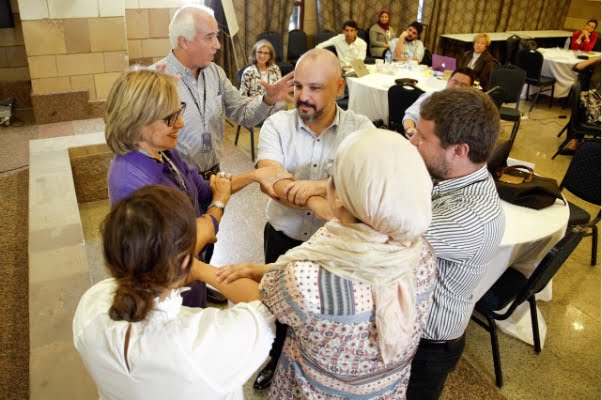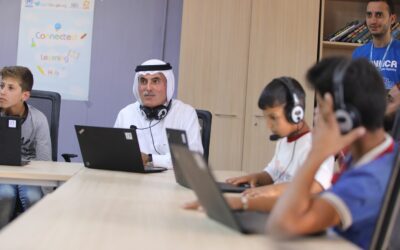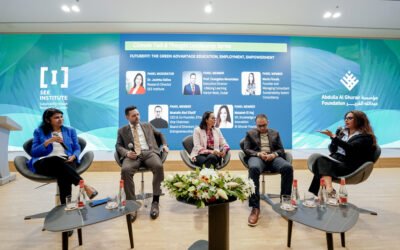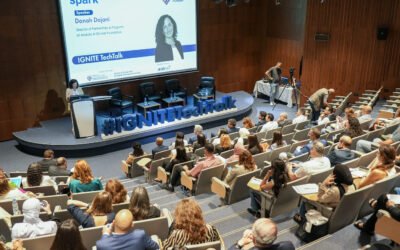Charting a Path Forward: A Multi-Stakeholder Collaboration to Promote Blended Learning in the Arab World
The Abdulla Al Ghurair Foundation for Education (AGFE) and the Massachusetts Institute of Technology (MIT) are pleased to share the white paper, “Charting a Path Forward: A Multi-stakeholder Collaboration to Promote Blended Learning in the Arab World.” This white paper describes the results of a joint project from 2017–2019 to promote blended learning (an approach that integrates online content and learning modules with traditional classroom instruction) in the Arab region.
As higher education institutions and policy makers grapple with the challenges posed by emergency remote teaching (ERT) during the Covid-19 pandemic, this white paper offers timely insights for universities and policy makers considering how to effectively transition to offering more sustainable, high quality and accredited online degree programs and courses.
In this project, AGFE and MIT worked with the American University of Beirut (AUB) and the American University in Cairo (AUC) from 2017–2019 to promote greater awareness of the opportunities surrounding online learning while building capacity in faculty and instructional designers for high quality (re)design of selected foundational undergraduate courses. Six faculty at AUB and AUC participated in the project. With support from administrators and learning designers, they developed four blended courses utilizing online MITx course materials and offered them to 1,196 students.
Overall, the evaluation data from both institutions showed that the faculty, as well as the administrators and designers, were truly engaged in the project and were committed to continuing their involvement with online and blended learning. In fact, three faculty members recently acknowledged that the conversion to total online instruction during the Covid-19 pandemic was much easier after participating in the AGFE-MIT project. The faculty and designers are also optimistic about the growth of online and blended learning within their institutions. On an institutional level, both universities are pursuing ambitious plans to grow their online and blended learning offerings.
In light of the global shift towards ERT over the past few months and the uncertainty regarding what higher education will look like in the coming months and years, there are a number of observations from our experience that are relevant when planning for online learning. First, the development of online learning and development of online programs are typically implemented over a period of many years. Whereas the transition to ERT at most universities took place within a few days or weeks, planning and iterative design over time are crucial to the successful development and delivery of online courses and programs.
Second, while universities coped as best they could to ensure a smooth transition for their students and faculty, the current practices, particularly in the Arab world, could not effectively address key components that are essential to making online learning work. These include assessment, student engagement and support, monitoring and evaluation, and ensuring that the whole university ecosystem is prepared to coordinate and collaborate to ensure a smooth student journey. To do that, as illustrated in the white paper, requires concerted commitment as well as alignment of processes, activities and mindsets that will allow for sustainable change.
Third, and perhaps most importantly, the experience over the past few months was an emergency situation that the higher education sector was thrust into without warning. These unique circumstances built a sense of community in universities that would otherwise be rarely seen. Under normal circumstances, the transition to offering courses and degree programs online requires significant leadership support, faculty engagement and buy-in as well as strategic planning and communication. To ensure success and sustainability, additional systemic considerations such as faculty preparation, institutional infrastructure, and quality assurance policies should be considered when making online and blended learning an on-going part of a university’s teaching and learning.
The authors, AGFE, and MIT gratefully acknowledge the leadership, faculty, staff, and students of the American University in Cairo and the American University of Beirut for participating in this project. We also thank the instructors and staff at MIT and the staff at the Abdulla Al Ghurair Foundation for Education for supporting our collective efforts.
Dr. Glenda S. Stump, Education Research Scientist, Open Learning, MIT; Brandon Muramatsu, Associate Director of Special Projects, Open Learning, MIT; Dr. Samar Farah, Director of Research and Innovation, Abdulla Al Ghurair Foundation for Education; and Dr. M. S. Vijay Kumar, Associate Dean of Digital Learning and Executive Director, Jameel World Education Lab, MIT.



